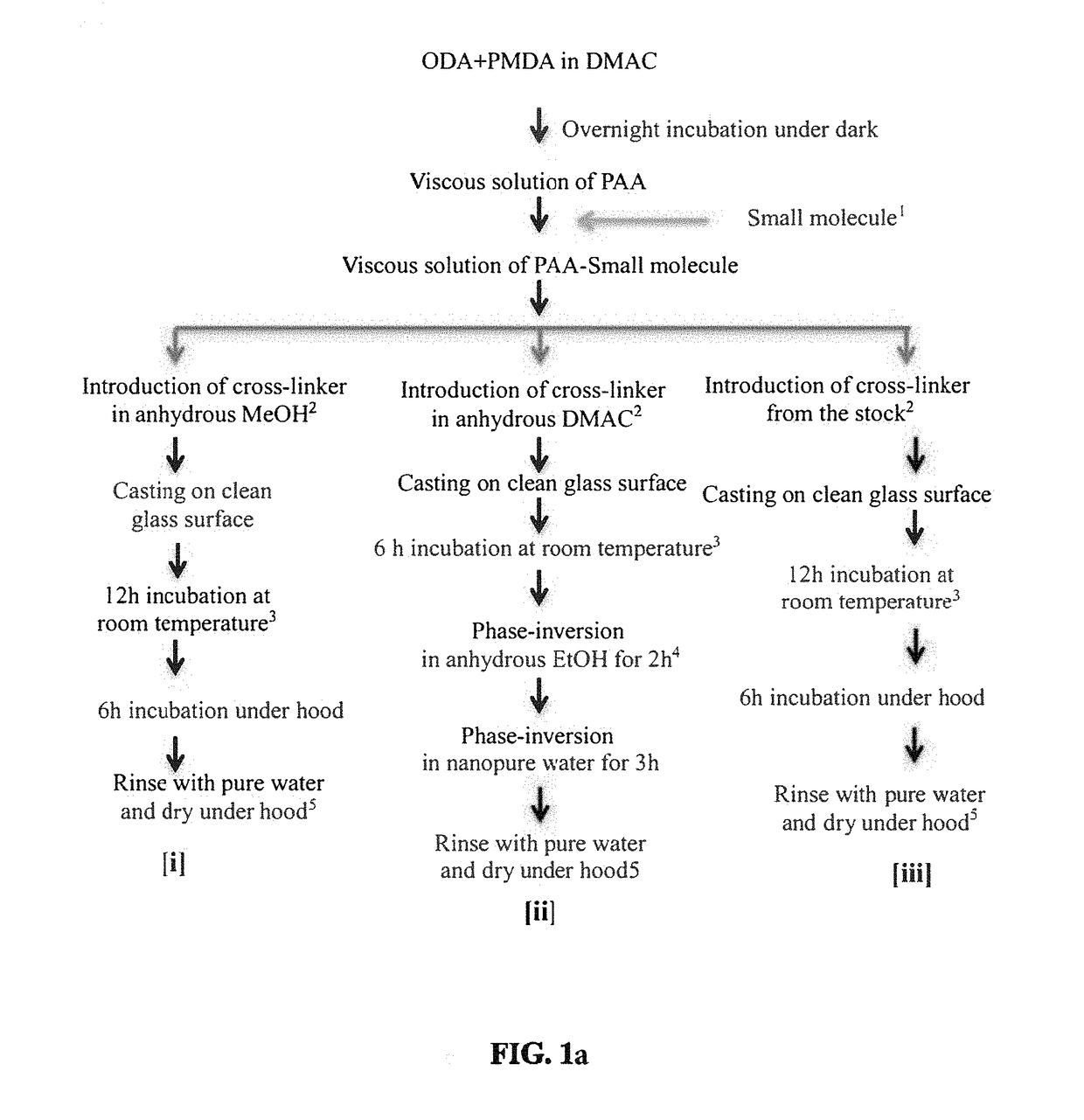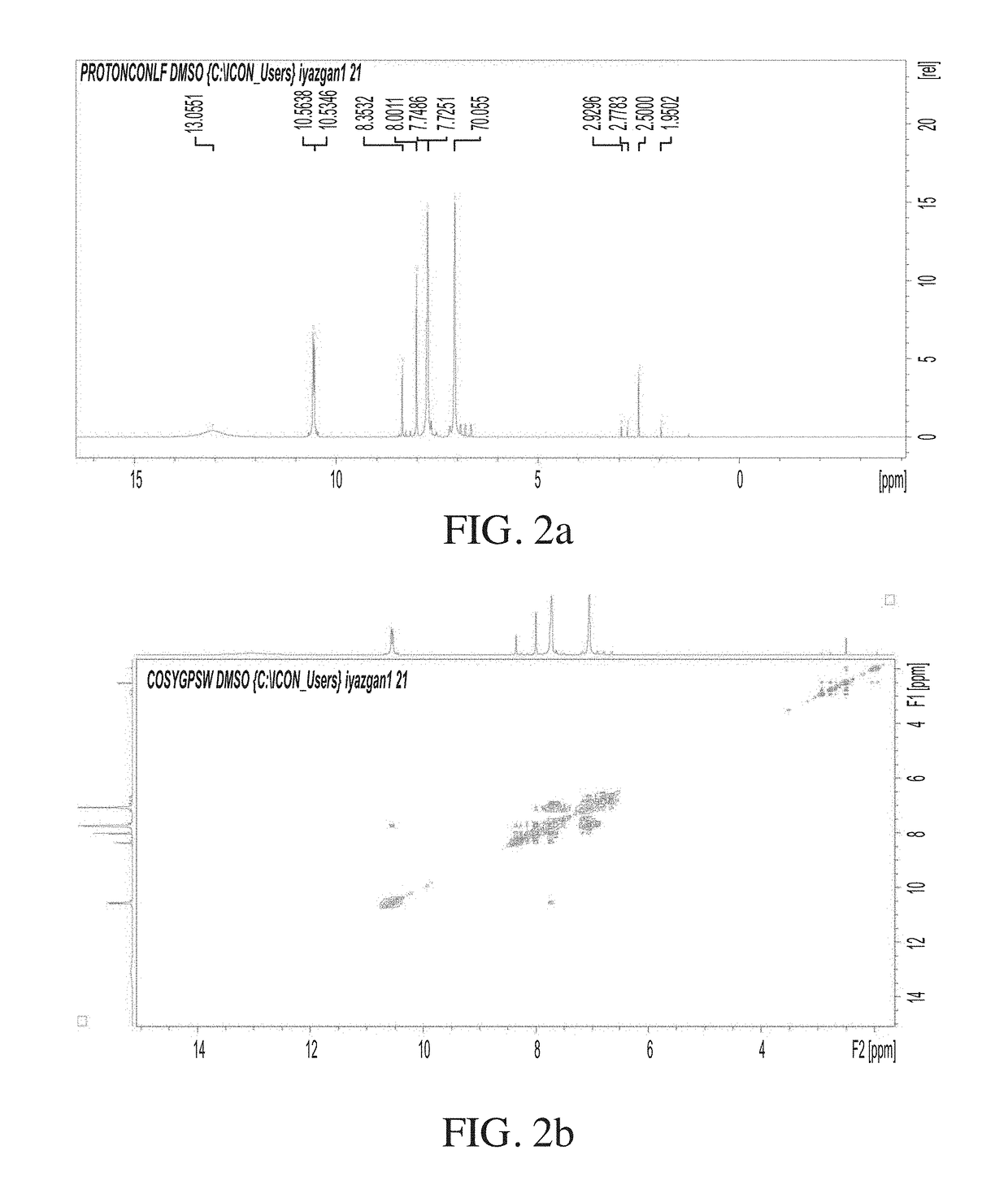Packaging material and methods of using the same
a technology of packaging material and packaging method, applied in the field of packaging material, can solve the problems of low cost of large-scale applications, inability to integrate intelligent and active capabilities, and inability to achieve intelligent and active capabilities in food packaging systems, etc., to achieve faster evaporation of solvents, promote cross-linking, and enhance cross-linking. effect of ga
- Summary
- Abstract
- Description
- Claims
- Application Information
AI Technical Summary
Benefits of technology
Problems solved by technology
Method used
Image
Examples
example 1.1
nd Methods
[0133]All of the reagents used in this and the following examples were purchased from Sigma-Aldrich (St. Louis, Mo.). Escherichia coli ATCC® 25922™ Cirobacter freundii, ATCC® 8090 and Staphylococcus epidermidis ATCC® 12228™ were purchased from American Type Culture Collection (ATCC) (Manassas, Va., USA). Dimethyl sulfoxide (DMSO)-d6 was purchased from Cambridge Isotope Laboratories (Andover, Mass. USA). Unless otherwise specified, phosphate saline (PBS) buffer was used as 50 mM pH 7.2. All solutions were prepared with triply distilled Nanopure water with resistivity of 18MΩ.
[0134]The above figure illustrates the steps in the synthesis of a PAA Polymer of the present disclosure using optional solvent systems: The ratio of 4,4′-oxydianiline (ODA):PMDA was tested from 1.20:1.00 to 1.00:1.05. The ratio given for each solvent was used through the examples.
[0135]The synthesis of PAA films in accordance with the present disclosure is shown in FIG. 1a. In the process of FIG. 1a, ...
example 1.2
Characteristics of PAA Films
[0138]The PAA film and the functionalized derivatives were dissolved in DMSOd6 (unless otherwise stated) and then subjected to 1H Nuclear Magnetic Resonance (NMR), 13C NMR, and 1H-correlation spectroscopy (COSY), 1H 13C Heteronuclear Single Quantum Coherence (HSQC), 1H 15N HSQC, 1H 13C Heteronuclear Multiple Bond Coherence (HMBC) and 1H 15N HMBC characterizations. A Bruker AM 600 spectrometer operated by Topspin™ 3.C NMR software was used for spectra measurement and analysis.
[0139]In order to fully annotate structure of phase inverted PAA and the designed PAA, NMR and IR experiments were performed. NMR was also used to monitor the possibility of Bisphenol A formation in relation to heat treatment and exposure time.
[0140]To move step by step, ACD / ChemSketch (Freeware) academic edition was used to draw the PAA structures, and PAA-GA interaction. This was due to the fact that in all cases, GA was used as an element in preparation of PAA films.
[0141]In the ab...
example 1.2.1
ght Characterization of PAA Polymers by NMR
[0170]Molecular weight (MW) characterization of the PAA polymers by NMR was performed using two approaches 1H DOSY and T1-relaxation times.
[0171]1H Diffusion ordered NMR Spectroscopy (1H DOSY) is a two-dimensional NMR technique which relies on the relation between molecular mass of a molecule / polymer and its self-diffusion. The technique has been shown to be useful in determining the average molecular weight of a polymer. It is based on the theory of the Stokes-Einstein equation. In all DOSY experiments samples was 1.2-1.4 mg / mL in DMF-d7 unless stated otherwise. In DOSY NMR experiments (a technique giving information about the average molecular weight of the molecules), concentration of the molecule / polymer should be low enough (1.2-1.4 mg / mL) to avoid viscosity related biased results.
[0172]As can be seen from FIG. 6, which illustrates the standard graphics of 1H DOSY, Polystyrene standards at 103.114 Da, 104.455 Da, 105.236 Da and 106.34 ...
PUM
| Property | Measurement | Unit |
|---|---|---|
| thickness | aaaaa | aaaaa |
| tensile strength | aaaaa | aaaaa |
| molecular weight | aaaaa | aaaaa |
Abstract
Description
Claims
Application Information
 Login to View More
Login to View More - R&D
- Intellectual Property
- Life Sciences
- Materials
- Tech Scout
- Unparalleled Data Quality
- Higher Quality Content
- 60% Fewer Hallucinations
Browse by: Latest US Patents, China's latest patents, Technical Efficacy Thesaurus, Application Domain, Technology Topic, Popular Technical Reports.
© 2025 PatSnap. All rights reserved.Legal|Privacy policy|Modern Slavery Act Transparency Statement|Sitemap|About US| Contact US: help@patsnap.com



